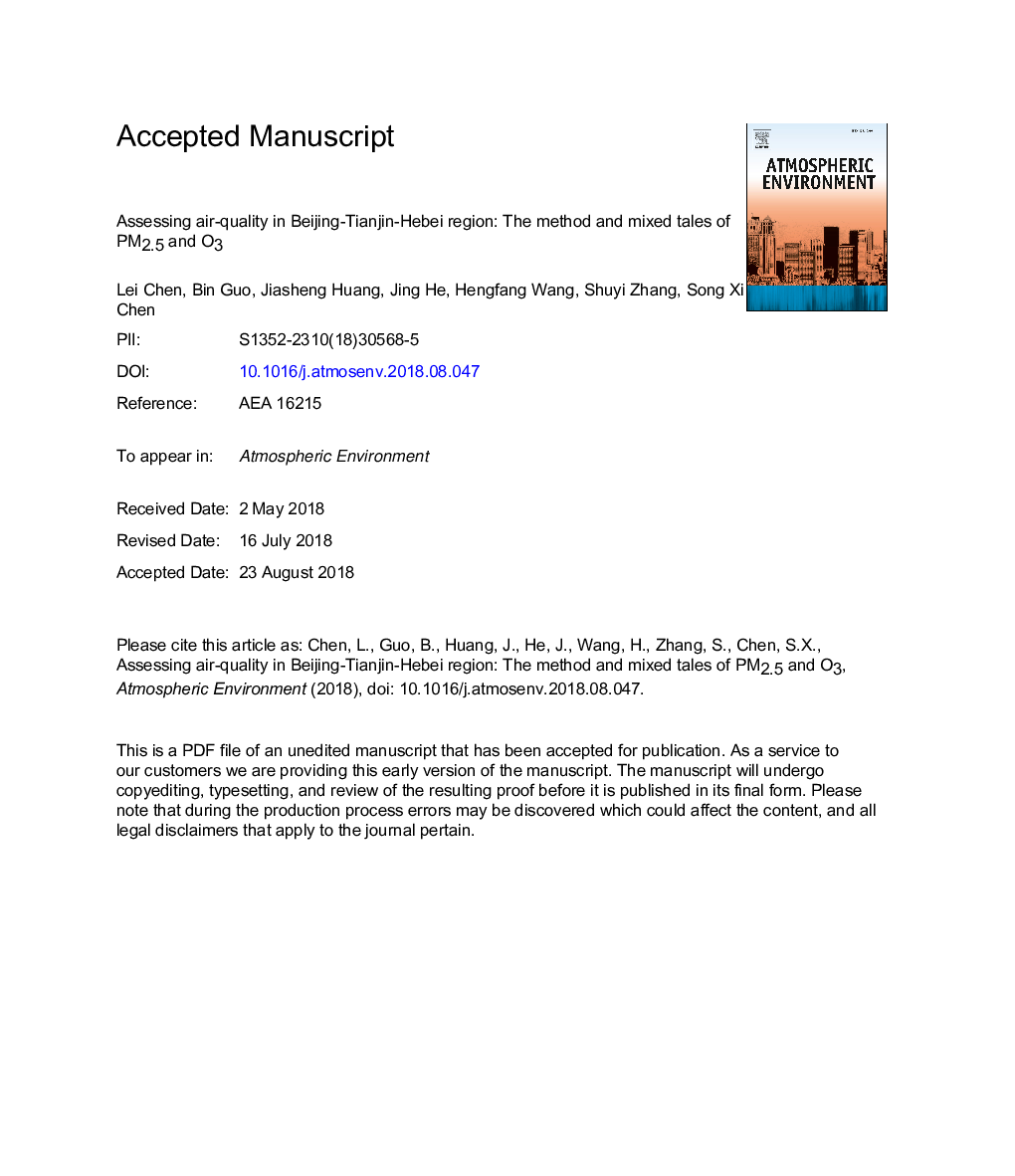| Article ID | Journal | Published Year | Pages | File Type |
|---|---|---|---|---|
| 11028691 | Atmospheric Environment | 2018 | 23 Pages |
Abstract
Motivated by a need to evaluate the effectiveness of a campaign to alleviate the notorious air pollution in China's Beijing-Tianjin-Hebei (BTH) region, we outline a temporal statistical adjustment method which is demonstrated from several aspects on its ability to remove the meteorological confounding existed in the air quality data. The adjustment makes the adjusted average concentration temporally comparable, and hence can be used to evaluate the effectiveness of the emission reduction strategies over time. By applying the method on four major pollutants from 73 air quality monitoring sites along with meteorological data, the adjusted averages indicate a substantial regional reduction from 2013 to 2016 in PM2.5 by 27% and SO2 by 51% benefited from the elimination of high energy consumption and high polluting equipments and a 20.7% decline of the coal consumption, while average NO2 levels had been static with a mere 4.5% decline. Our study also reveals a significant increase in the ground O3 by 11.3%. These suggests that future air quality management plans in BTH have to be based on dual targets of PM2.5 and O3.
Keywords
Related Topics
Physical Sciences and Engineering
Earth and Planetary Sciences
Atmospheric Science
Authors
Lei Chen, Bin Guo, Jiasheng Huang, Jing He, Hengfang Wang, Shuyi Zhang, Song Xi Chen,
